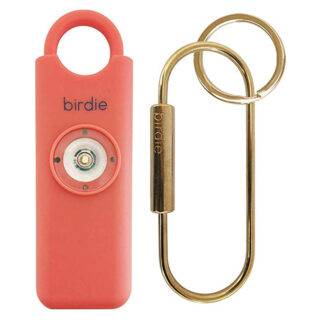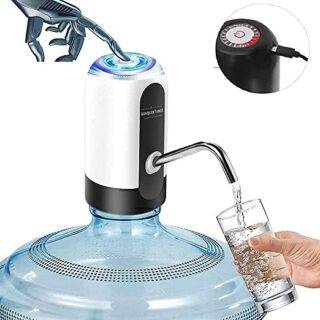
Table of Contents
ToggleHistory Of Tillers
Electric Tillers, devices used to cultivate soil in preparation for planting, have a long history that dates back to the advent of agriculture itself.
Prehistoric Era
The history of tillers begins with the early human transition from nomadic hunter-gatherer lifestyles to settled agriculture, around 10,000 BCE, during the Neolithic Revolution. The first “tillers” were simple handheld digging sticks and hoes made of wood, stone, or bone.
Bronze Age and Iron Age
With the advent of the Bronze Age (approximately 3300 BCE to 1200 BCE), metal tools became more common, and tillage implements improved in durability and effectiveness. The Iron Age (starting around 1200 BCE) further improved these tools.
Middle Ages
The heavy plow with a mouldboard, which can turn over heavy soils and bury weeds, was invented in the Middle Ages. This was an important step forward in tillage technology, allowing for the cultivation of heavier soils than was previously possible.
Industrial Revolution
In the 18th century, during the Industrial Revolution, the development of steam power led to the creation of the first mechanical tillers. These machines were large, unwieldy, and expensive, but they represented a significant advance in agricultural technology.
20th Century
In the 20th century, the invention of the internal combustion engine led to the development of the modern tractor, which could pull a variety of tillage implements. This greatly increased the efficiency of tillage and allowed for the cultivation of much larger areas than was previously possible. Around the mid-20th century, the rototiller became popular, especially for smaller farming operations and home gardens. Rototillers are smaller, self-propelled machines that use a set of rotating tines to break up and turn over soil. They can be very effective for smaller areas and are easier to use than larger tillage implements.
21st Century
In the 21st century, tillage has become more precise and environmentally friendly with the help of GPS and other technologies. Some modern tillers are even fully automated, and can prepare a field for planting with little to no human intervention. There is also a growing interest in low-till and no-till farming methods, which minimize soil disruption in order to preserve soil health and prevent erosion. As of my knowledge cutoff in September 2021, these are the key points in the history of tillers. For more recent developments, you may want to look up additional sources.
Modern Technological Advancements In Tillers
The development of tillers has continued to advance in the 21st century with the help of modern technology. As of my knowledge cutoff in September 2021, here are some of the most significant technological advancements in tillers:
Precision Agriculture
Precision agriculture, also known as precision farming, uses technologies like GPS, remote sensing, and data management tools to optimize farming practices. In the context of tillers, precision agriculture allows farmers to tailor their tilling practices to the specific needs of each part of their field, improving efficiency and reducing environmental impact.
Automated and Robotic Tillers
Automation is becoming more common in agriculture, and tillers are no exception. Automated tillers can operate with little to no human intervention, guided by GPS and other technologies. Robotic tillers, which are smaller and more precise than traditional tillers, are also being developed.
Electrification
Like many other types of machinery, tillers are increasingly being electrified as part of a broader shift towards sustainable and renewable energy. Electric tillers can be quieter, more efficient, and less polluting than tillers powered by internal combustion engines.
Smart Sensors
The use of smart sensors in tillers allows for more precise and efficient tilling. These sensors can measure a variety of soil properties, such as moisture content, nutrient levels, and compaction, and adjust the tiller’s operation accordingly.
Telematics
Telematics technology is used to monitor and manage agricultural machinery, including tillers. This technology can provide real-time information about a tiller’s location, operating status, and other important data, allowing for improved efficiency and maintenance.
Low-Till and No-Till Technologies
There is growing interest in low-till and no-till farming methods, which minimize soil disruption in order to preserve soil health and prevent erosion. New technologies are being developed to support these methods, including specialized tillers that can plant crops with minimal soil disturbance.
These advancements are driving a revolution in agriculture, making tilling more efficient, sustainable, and precise. However, the technologies mentioned here are based on information up to September 2021. For more recent developments, you might want to look for additional sources.
Importance Of Tillers In Gardening And Agriculture
Tillers play a crucial role in both gardening and agriculture. Here are several reasons why tillers are important:
- Soil Preparation: Tillers are primarily used for preparing soil for planting. They break up hard soil, making it easier for plant roots to penetrate deeply and evenly. This breaking up of the soil also allows for better water absorption and prevents water from pooling on the surface.
- Weed Control: Tilling helps in weed control by uprooting existing weeds and burying weed seeds deep in the soil where they can’t germinate. This can significantly reduce the need for chemical weed killers.
- Mixing Organic Matter: Tillers are also used to mix organic matter (like compost or manure) into the soil. This not only improves the soil structure but also increases its nutrient content, providing plants with the necessary elements for growth.
- Aeration: By breaking up compacted soil, tillers improve aeration, allowing oxygen to reach plant roots more easily. Good soil aeration is essential for root health and overall plant growth.
- Crop Rotation: In agriculture, tillers are used in crop rotation strategies, which involve changing the type of crop planted in a given area each year. Tilling helps to prepare the soil for the new crop, ensuring it has the right structure and nutrient content.
- Efficiency: In large-scale farming operations, mechanized tillers greatly increase the efficiency of soil preparation, saving both time and labor. This has enabled the cultivation of much larger areas than was possible with manual methods.
However, it’s important to note that while tilling has many benefits, it can also have negative effects if overused or used improperly. Over-t
Overview Of Gas-Powered Tillers
Gas-powered tillers, also known as petrol tillers, are a type of mechanical tiller commonly used in gardening and agriculture. They are powered by an internal combustion engine that runs on gasoline. Here is an overview of gas-powered tillers:
Types of Gas-Powered Tillers
There are typically three types of gas-powered tillers:
- Front-Tine Tillers: The tines are located in the front of the engine. These tillers are typically smaller and more maneuverable than rear-tine tillers, making them ideal for smaller gardens and areas with tight spaces.
- Rear-Tine Tillers: The tines are located behind the engine. These tillers are typically larger and more powerful than front-tine tillers, making them suitable for larger areas and harder, more compacted soils.
- Cultivators or Mini-Tillers: These are small, lightweight tillers designed for light-duty tasks like weeding and aerating soil. They are not designed for breaking up hard soil or large-scale tilling.
Advantages of Gas-Powered Tillers
- Power: Gas-powered tillers are generally more powerful than electric tillers. They can handle harder, more compacted soils and larger areas.
- Portability: Since they don’t need to be plugged in, gas-powered tillers can be used anywhere, making them more versatile than corded electric tillers.
- Durability: Gas-powered tillers are typically more robust and durable than electric tillers. They are designed to handle tough conditions and last for many years with proper maintenance.
Disadvantages of Gas-Powered Tillers
- Noise and Pollution: Gas-powered tillers are typically louder than electric tillers, and they produce exhaust emissions that can be harmful to the environment.
- Maintenance: Gas-powered tillers require more maintenance than electric tillers. They need regular oil changes, spark plug replacements, and other engine maintenance.
- Weight: Gas-powered tillers are typically heavier than electric tillers, which can make them more difficult to maneuver, especially for people with limited strength or mobility.
In conclusion, gas-powered tillers can be a powerful and versatile tool for gardening and agriculture, but they also come with certain drawbacks that should be considered. The best type of tiller for a given situation will depend on the specifics of the task at hand.
How Gas-Powered Tillers Work
Gas-powered tillers, also known as petrol tillers, operate on the principles of internal combustion and mechanical transmission. Here’s a simplified overview of how they work:
- Internal Combustion Engine: The heart of a gas-powered tiller is its internal combustion engine. When you start the tiller, the engine begins to burn gasoline in a controlled manner, creating a series of small explosions. These explosions drive a piston back and forth within a cylinder.
- Transmission: The movement of the piston is converted into rotational motion by the engine’s crankshaft. This rotational motion is then transferred to the tiller’s transmission.
- Tines: The transmission, through a series of gears, transfers the rotational motion to the tines (the sharp, pronged blades of the tiller). This causes the tines to rotate, or “till,” digging into the soil and turning it over.
- Controls: The operator of the tiller can control the speed of the tines and the movement of the tiller itself using the tiller’s throttle and clutch. The throttle controls the amount of fuel entering the engine, and thus the speed of the engine and the tines, while the clutch can engage or disengage the transmission, allowing the operator to stop the tines without stopping the engine.
- Wheels: Some gas-powered tillers also have powered wheels, which can make the tiller easier to maneuver. In these tillers, the engine’s motion is also used to drive the wheels.
In essence, a gas-powered tiller works by converting the chemical energy stored in gasoline into mechanical energy, which is used to rotate the tines and dig into the soil. The operator can control the tiller’s speed and direction, allowing them to effectively prepare the soil for planting.
Pros And Cons Of Gas-Powered Tillers
Gas-powered tillers are a popular choice for many gardeners and farmers due to their power and portability. However, like any tool, they have both advantages and disadvantages.
Pros of Gas-Powered Tillers
- Power: Gas-powered tillers are generally more powerful than their electric counterparts. They can handle tougher soils and larger tilling tasks more efficiently.
- Portability: Since they’re not limited by a power cord, gas-powered tillers can be used anywhere, making them suitable for larger gardens or fields where an electrical outlet may not be readily available.
- Versatility: Gas-powered tillers usually offer variable speed settings, giving you more control over your tilling. They also come in various sizes and styles, making it easier to find one that suits your specific needs.
- Durability: These tillers are typically built to last, with sturdy designs that can withstand heavy-duty use.
Cons of Gas-Powered Tillers
- Noise and Emissions: Gas-powered tillers are usually louder than electric models and produce exhaust fumes, which can be unpleasant and are not environmentally friendly.
- Maintenance: They require more maintenance than electric tillers. Regular tasks may include changing the oil, replacing spark plugs, and cleaning or replacing air filters.
- Weight: Gas tillers are generally heavier than electric tillers, which can make them more difficult to maneuver, especially for people with limited strength or mobility.
- Cost: Upfront costs for gas-powered tillers can be higher than for electric models, and there are ongoing costs for fuel and maintenance.
- Starting Method: Most gas-powered tillers use a pull-cord starting method, which can be difficult for some people. However, some models do offer electric start features.
whether a gas-powered tiller is right for you will depend on your specific circumstances, including the size and condition of your garden or field, your physical capabilities, your budget, and your personal preferences.
Overview Of Electric-Powered Tillers
Electric-powered tillers, or simply electric tillers, are a type of mechanical tiller commonly used for home gardening and small-scale farming. They use an electric motor for power rather than an internal combustion engine. Here’s an overview of electric-powered tillers:
Types of Electric-Powered Tillers
Electric tillers generally fall into two categories:
- Corded Electric Tillers: These tillers are connected to a power source via a cord. They provide continuous power but their range is limited by the length of the cord and proximity to an electrical outlet.
- Cordless Electric Tillers (Battery-Powered): These tillers are powered by rechargeable batteries, usually lithium-ion. They offer greater mobility than corded models but their runtime is limited by battery life.
Advantages of Electric-Powered Tillers
- Ease of Use: Electric tillers are generally lighter and easier to maneuver than gas-powered tillers. They also start with a simple push of a button, eliminating the need for a pull cord.
- Maintenance: Electric tillers require less maintenance than gas-powered tillers. There’s no need for oil changes, spark plug replacements, or air filter cleaning.
- Noise and Emissions: Electric tillers are quieter than gas-powered tillers and produce no exhaust emissions, making them more environmentally friendly.
- Cost: While the upfront cost can vary, electric tillers typically have lower ongoing costs as they don’t require fuel.
Disadvantages of Electric-Powered Tillers
- Power: Electric tillers are generally less powerful than gas-powered tillers. They may struggle with very hard, compacted soil or large tilling tasks.
- Range (for Corded Models): The range of corded electric tillers is limited by the length of their power cord and the need for an electrical outlet.
- Runtime (for Battery-Powered Models): While cordless electric tillers offer greater mobility, their runtime is limited by their battery life.
Overall, electric-powered tillers can be a good choice for small to medium-sized gardens or for gardeners who prefer a quieter, more environmentally friendly option. However, they may not be suitable for larger, more demanding tilling tasks.
How Electric-Powered Tillers Work
Electric-powered tillers, whether corded or battery-powered, operate based on the principles of electric power and mechanical transmission. Here’s a simplified overview of how they work:
- Electric Power: Electric tillers use an electric motor for power. For corded models, this power comes from a standard electrical outlet via a power cord. For battery-powered models, the power comes from a rechargeable battery, typically lithium-ion.
- Motor: When the tiller is turned on, electricity from the power source flows into the motor. This creates a magnetic field that causes the motor’s rotor to spin.
- Transmission: The spinning of the motor’s rotor is then transferred to the tiller’s transmission. This is usually done through a direct drive or a belt drive system.
- Tines: The transmission, through a series of gears or a direct drive system, transfers the rotational motion to the tines (the sharp, pronged blades of the tiller). This causes the tines to rotate, or “till,” digging into the soil and turning it over.
- Controls: The operator of the tiller can control the speed of the tines and the movement of the tiller itself using the tiller’s controls. Most electric tillers have a simple on/off switch and a throttle to control the speed of the tines.
- Battery (For Battery-Powered Models): Battery-powered tillers include a rechargeable battery, often lithium-ion. This battery needs to be charged periodically, usually after every few hours of use, depending on the model and the battery’s capacity.
In essence, an electric tiller works by converting electrical energy into mechanical energy, which is used to rotate the tines and dig into the soil. The operator can control the tiller’s speed and direction, allowing them to effectively prepare the soil for planting. Electric tillers are generally easier to operate and maintain than gas-powered tillers, making them a popular choice for home gardeners.
PERFORMANCE COMPARISON: ELECTRIC VS GAS TILLERS
When comparing the performance of electric and gas-powered tillers, several factors come into play. Here’s a comparison of their performance in various aspects:
- Power and Performance: Gas-powered tillers are generally more powerful than electric tillers. They can handle tougher soils, including compacted or clay soils, more effectively. Gas tillers have greater tilling depth and can handle larger tilling areas. They are often the preferred choice for larger-scale agricultural applications.
- Electric tillers, on the other hand, are generally less powerful than gas tillers. They are better suited for lighter tilling tasks and smaller garden areas. Electric tillers may struggle with hard or compacted soils, and they have a limited tilling depth.
- Maneuverability and Ease of Use: Electric tillers are generally lighter and easier to maneuver than gas-powered tillers. They are easier to handle and control, especially for users with limited physical strength. Electric tillers often have ergonomic designs and may offer features like adjustable handles for added comfort during operation.
- Gas-powered tillers can be heavier and more cumbersome to maneuver. They require more physical effort to control, particularly in challenging or uneven terrain. However, rear-tine gas tillers can offer better stability and control in tougher soil conditions.
- Noise and Emissions: Electric tillers are significantly quieter than gas-powered tillers. They produce minimal noise, making them more suitable for noise-sensitive environments or urban areas. Electric tillers also have no exhaust emissions, making them more environmentally friendly.
- Gas-powered tillers are typically louder due to their internal combustion engines. They emit exhaust fumes, contributing to air pollution. However, advancements in engine technology have led to more efficient and cleaner-running gas tillers.
- Maintenance and Operation Costs: Electric tillers generally require less maintenance compared to gas-powered tillers. They don’t require oil changes, spark plug replacements, or air filter cleanings. Electric tillers also don’t require fuel, resulting in lower operational costs.
- Gas-powered tillers require more maintenance, including regular engine maintenance tasks. They need oil changes, spark plug replacements, and air filter cleanings. They also require fuel, which adds to the operational costs.
- Range and Mobility: Electric tillers have limited range due to the power cord length for corded models or battery life for cordless models. Corded electric tillers need to be near an electrical outlet, while cordless electric tillers have a runtime limited by battery capacity. This can be a constraint for larger areas or areas without easy access to power sources.
Gas-powered tillers offer greater mobility since they are not limited by cords or batteries. They can be used anywhere without restrictions on range, making them suitable for larger fields or areas with no power sources nearby.
In summary, gas-powered tillers generally offer more power, better performance in tough soil conditions, and greater mobility. However, electric tillers are lighter, easier to maneuver, quieter, and have lower maintenance and operational costs. The choice between electric and gas-powered tillers depends on the specific needs, size of the area, soil conditions, and the user’s preferences and priorities.
Safety Considerations: Electric Vs Gas Power Tillers
When it comes to safety considerations, both electric and gas-powered tillers have certain factors to be aware of. Here are some key safety considerations for each type:
Electric Tillers:
- Electrical Hazards: For corded electric tillers, the power cord presents a potential tripping hazard. It’s important to ensure the cord is properly secured and away from the tilling area to avoid accidental entanglement.
- Extension Cord Safety: If using a corded electric tiller, it’s crucial to use an appropriate outdoor-rated extension cord. The cord should be rated for the power requirements of the tiller and be in good condition to prevent electrical hazards.
- Water and Moisture: Electric tillers should not be operated in wet or rainy conditions to avoid electrical shock. Always ensure the tiller and electrical connections are kept dry.
- Battery Safety: For battery-powered electric tillers, follow the manufacturer’s instructions regarding battery charging and handling to prevent any risk of fire or chemica0l leaks.
Gas-Powered Tillers:
- Exhaust Fumes: Gas-powered tillers emit exhaust fumes that contain carbon monoxide, a toxic gas. It’s important to operate gas tillers in well-ventilated areas to prevent the accumulation of harmful fumes. Avoid using them in enclosed spaces or poorly ventilated areas.
- Fuel Handling: When refueling gas-powered tillers, exercise caution to prevent spills and fuel contact with the skin or eyes. Use approved containers and avoid filling the fuel tank while the tiller is hot. It’s also important to store fuel in a safe place away from heat sources.
- Engine Cooling: Gas tillers have hot engine components during operation. Avoid contact with hot surfaces to prevent burns.
- Maintenance Safety: Follow proper maintenance procedures and safety guidelines provided by the manufacturer. This includes keeping hands, feet, and loose clothing away from moving parts and ensuring the tiller is powered off and cool before performing maintenance tasks.
Regardless of the type of tiller, it’s important to read and understand the manufacturer’s instructions and safety guidelines before operation. Always wear appropriate personal protective equipment (PPE), such as gloves, safety goggles, and sturdy footwear, to protect against potential injuries.
FAQ
Most frequent questions and answers
A garden tiller is a gardening tool or machine used to prepare the soil for planting. It is designed to break up and loosen compacted soil, allowing for better aeration, drainage, and nutrient penetration.
Garden tillers typically have rotating blades or tines that dig into the soil. These blades or tines break up the soil, turning it over and breaking apart clumps. Some tillers are powered by gas engines, while others are electric or manual. The rotating motion of the blades or tines helps to mix in organic matter and create a more suitable environment for planting.
There are several types of garden tillers available, including:
- Front-tine tillers: These tillers have blades or tines located in the front, making them suitable for smaller gardens or lighter soil.
- Rear-tine tillers: These tillers have blades or tines located at the rear, providing more power and stability. They are ideal for larger gardens or tougher soil conditions.
- Cultivators: Cultivators are smaller, lightweight tillers designed for cultivating or aerating the soil rather than heavy-duty tilling. They are often used for maintaining flower beds and small vegetable gardens.
The frequency of tilling depends on various factors such as soil type, climate, and the specific needs of your plants. In general, it is recommended to till your garden at the beginning of each growing season to prepare the soil for planting. However, excessive tilling can disrupt beneficial soil organisms and lead to soil erosion. If you have a well-established garden with healthy soil, you may only need occasional tilling to amend specific areas or when introducing new plants.











Leave a Reply